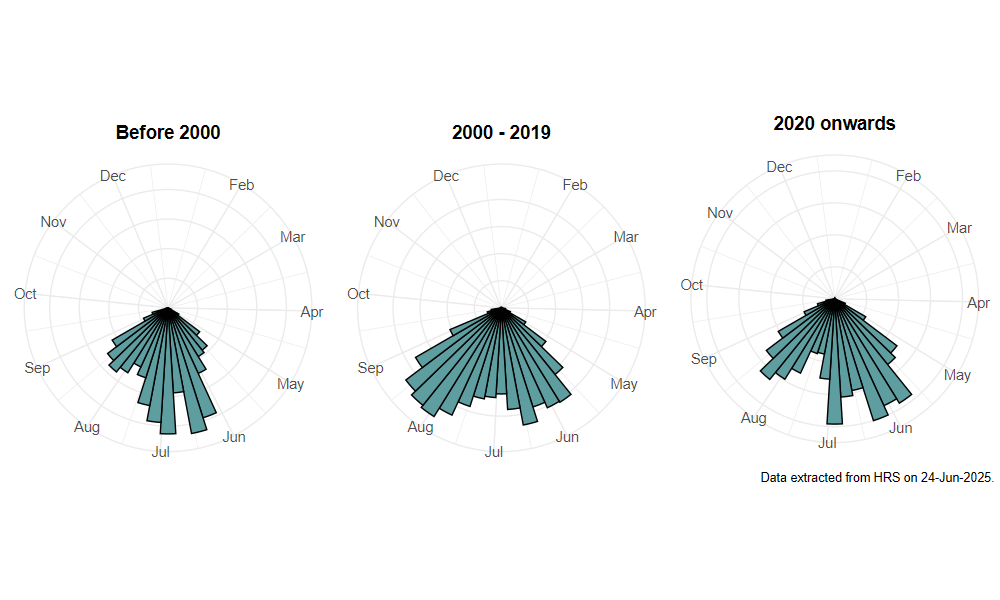Platycheirus rosarum (Fabricius, 1787)
Identification
Identification difficulty = 1. ![]()
![]() according to Ball & Morris, 20241
according to Ball & Morris, 20241
Synonymy
Pyrophaena rosarum (Forster, 1771) in Stubbs & Falk (1983)2.
Biology
P. rosarum occurs in wet meadows and in the lush vegetation fringing marshes, pond, lakes, etc. Larva unknown, but presumed to feed on aphids in wetland situations. Pupae have been found in fenland flood refuse. Adults fly amongst stands of tall vegetation such as rushes Juncus sp. and Common Reed Phragmites australis and frequently settle on the stems. They visit a wide range of flowers and males can be found hovering over more open areas. Generally occurs in the same habitats as P. granditarsus, and the two are often found together.
Flight period
The following plots show the number of unique records per week excluding those reported to be of immature stages.

Distribution
Very widespread but seemingly somewhat more regularly recorded in southern counties. There are definite gaps in distribution such as Lincolnshire and The Wash.

Trends
The following plots show the Frescalo TFactor vs year and a map of the rescaled frequency (all records) for the species.